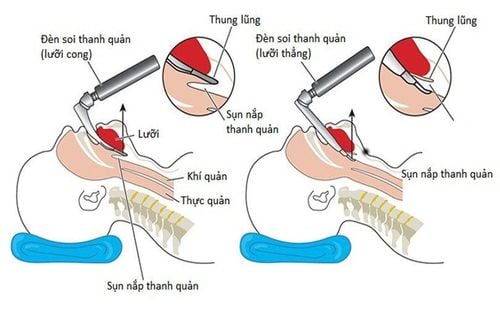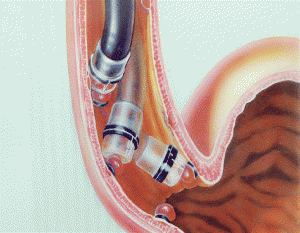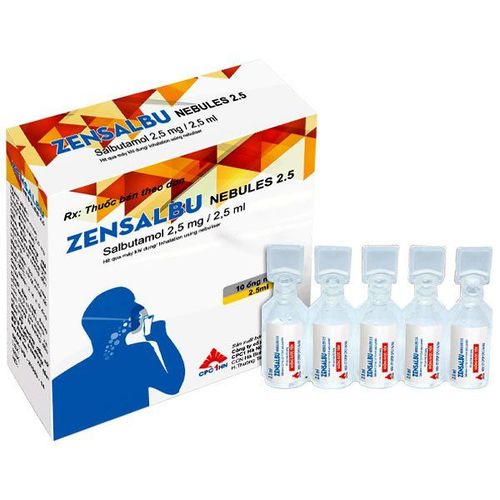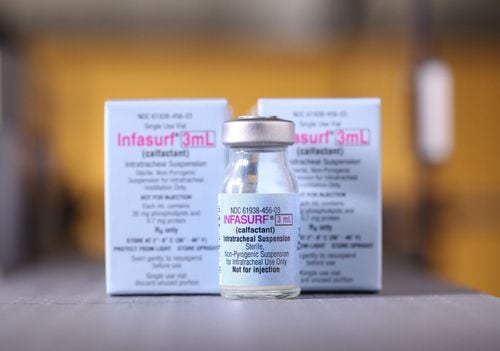This is an automatically translated article.
Oral endotracheal intubation is a method of inserting a catheter into the patient's trachea through the mouth to ensure ventilation and aspirate stagnant sputum in the respiratory tract. It is a simple technique that is easy to perform, but doctors and patients need to pay attention to some issues to avoid complications.
1. Indications and contraindications of oral endotracheal intubation technique
1.1. Indications Oral technique of endotracheal intubation is indicated in the following cases:
Patients with severe respiratory failure; Protect the airway in patients with coma or respiratory paralysis; Aspiration of bronchial lavage through endotracheal tube; Support breathing with an Ambu balloon or artificial ventilation. 1.2. Contraindications Oral endotracheal intubation is contraindicated in the following cases:
Jaw dislocations Nasopharyngeal tumors Jaw fractures Oropharyngeal surgery
2. What to prepare before performing oral intubation technique
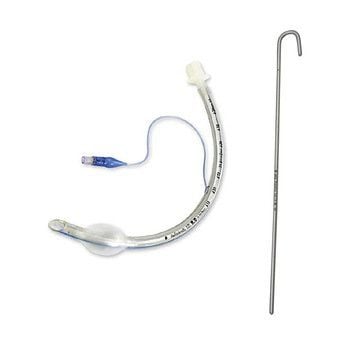
Cần chuẩn bị ống nội khí quản trước khi thực hiện kỹ thuật đặt ống nội khí quản đường miệng
2.1. Specialist staff Oral endotracheal intubation is a simple technique, but it still requires an experienced resuscitator and anesthesiologist to perform this procedure, to avoid unwanted complications. wish to happen.
2.2. Prepare equipment for endotracheal tube technique: choose the right tube size for each patient's condition. Normally adult sizes are 8.0mm respectively; 7.5mm; 7.0mm, choose tube size with ring finger. For children, sizes are 5.5mm; 4.5mm and 3.0mm. Select tube size with little finger; Laryngoscope to depress the straight tongue and depress the curved tongue; Magill forceps (clips the endotracheal tube); Injection pump larynx, trachea; Anesthetics: novocaine, xylocaine 1%, 2%; Drugs atropine, seduxen; Syringe 5ml, paraffin oil; Suction machine, catheter for suction; Roll tape for inserting two teeth; Roll or adhesive tape to fix the endotracheal tube; Shoulder pillow; Ambu balls, oxygen tanks and oxygen breathing apparatus; Blood pressure monitor, stethoscope, stopwatch. 2.3. Patient If the patient is awake, the doctor is responsible for explaining the technical process and encouraging the patient to cooperate. In case the patient has signs of fatigue, seduxen 10mg intravenously; If the patient is in a coma, the doctor explains the above problems to the patient's family, including the possible complications during the intubation process; Suction sputum; Have the patient breathe oxygen through the nose 3 to 5 liters / min (for 15 minutes before performing the technique); If the patient stops breathing or breathes yawn, breathing is too weak, squeeze the ambu ball through the nose, mouth 10-15 minutes before performing the technique.
3. Technical manipulation of endotracheal intubation through the mouth

Hình ảnh mô tả kỹ thuật đặt ống nội khí quản qua đường miệng
The technique of endotracheal intubation through the mouth is only performed when there is obstruction to the nasal passage such as nasal polyps or hypertrophy of the nasopharynx,...
Specific operations are as follows:
First install a laryngoscope and then check examine the illuminator and give it to the doctor; Aspirate sputum and then give the patient oxygen; Help doctors perform hand sanitizer operations, wear sterile gloves; Prepare medicine and help the doctor take anesthetic, apply paraffin oil to the endotracheal tube and give it to the doctor; Give the Magill forceps to the doctor; Xylocaine injection pump for laryngeal anesthesia; When the doctor inserts the tube into the trachea, the patient will have increased secretions, cough and laryngospasm; Quickly perform aspiration of sputum remaining in the respiratory system for patients; Insert and squeeze the ambu balloon and then inflate the insert with the syringe. Insert gauze or tape to fix the endotracheal tube; Check pulse, body temperature, blood pressure, breathing rate after intubation. Assess the patient's hypoxia level after performing the technique; Clean up your tools and take notes.
4. Accidents and complications
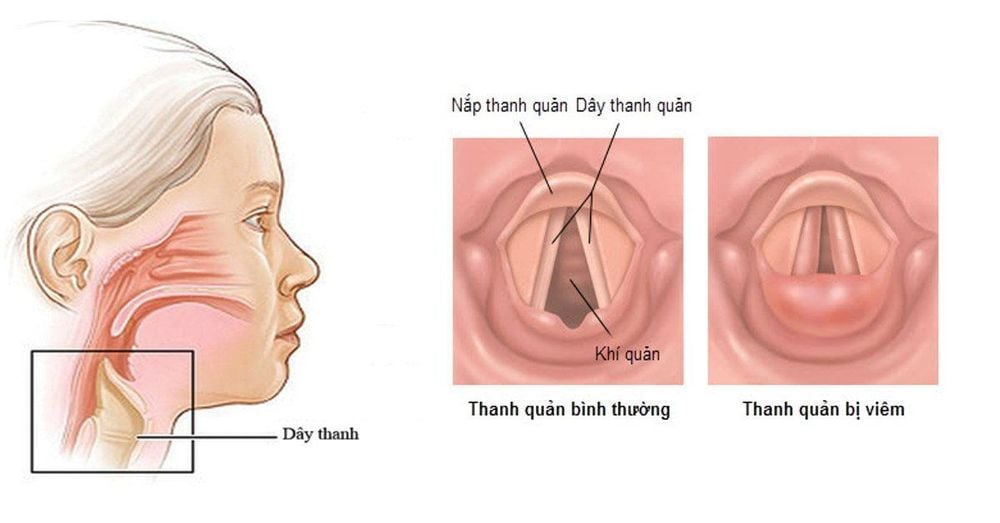
Viêm thanh quản là một trong những biến chứng có thể xảy ra sau khi thực hiện kỹ thuật đặt ống nội khí quản qua đường miệng
4.1. Possible technical complications Some of the complications that the patient may have after performing the oral intubation technique include:
Bleeding: Caused by the endotracheal tube being too big, pushing the endotracheal tube. Strong tube causes flow behind the pharynx, vocal cords, trachea. Bacterial infection: due to the poor sterilization process, the tracheal wall is scratched. Endotracheal tube into the esophagus. 4.2. Complications of the technique Some complications may occur after performing the technique of endotracheal intubation through the mouth:
Rhinitis, pharyngitis, laryngitis; Edema, inflammation of the trachea leading to narrowing of the trachea; Sudden severe shortness of breath, cyanosis of the whole body, white neck. The endotracheal tube must be checked immediately, the ambu balloon tube is removed, and the endotracheal tube is reinserted; Sudden reflex cardiac arrest, which is a common complication in hypoxic patients; Complications of atelectasis occurred due to the endotracheal tube being deeply penetrated to the bronchial branch; Obstruction of sputum in the endotracheal tube.
5. Taking care of patients with oral endotracheal intubation
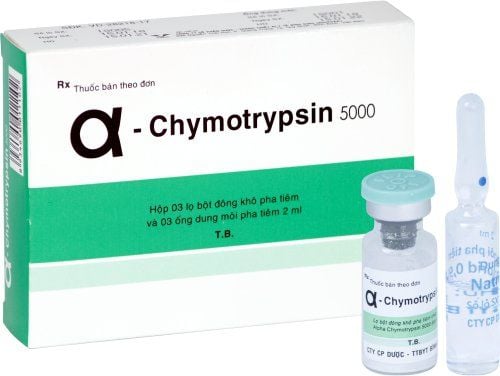
Sủ dụng α-Chymotrypsin để làm loãng đờm và hạn chế khả năng nhiễm khuẩn
If the patient is awake, the hand must be immobilized so that the patient does not self-extract the endotracheal tube. Aspirate blood from the throat and endotracheal tube, monitor and handle it according to the doctor's orders. The frequency of sputum aspiration is about 30 minutes/time, and 1ml of 14% sodium bicarbonate solution or α-Chymotrypsin is placed into the endotracheal tube to thin the sputum and limit the possibility of infection. Rinse the sputum suction tube with an antiseptic solution. Monitor parameters such as pulse, temperature, blood pressure, breathing rate every 1 hour or every 3 hours as ordered by a specialist. Assess the patient's condition after endotracheal intubation such as cyanosis, consciousness. Monitor for complications and complications listed above, pay attention to sputum obstruction in the patient's endotracheal tube. Monitor the retention time of the endotracheal tube, if after 48 hours, the patient is still in a state of respiratory failure, then a tracheostomy is indicated. Although the technique of tracheal intubation through the mouth is simple, it requires very high experience to avoid complications or confusion when placing the wrong tube. This is a method of good airway control that is very effective in resuscitation and emergency surgery.
Vinmec International General Hospital is a prestigious facility with a quality medical team that is highly appreciated by experts, experienced, good technology, good qualifications, dedicated to the profession. The system of modern and advanced equipment helps the process of emergency, diagnosis and treatment of diseases achieve high efficiency.
To register for examination and treatment at Vinmec International General Hospital, you can contact the nationwide Vinmec Health System Hotline, or register online HERE.






